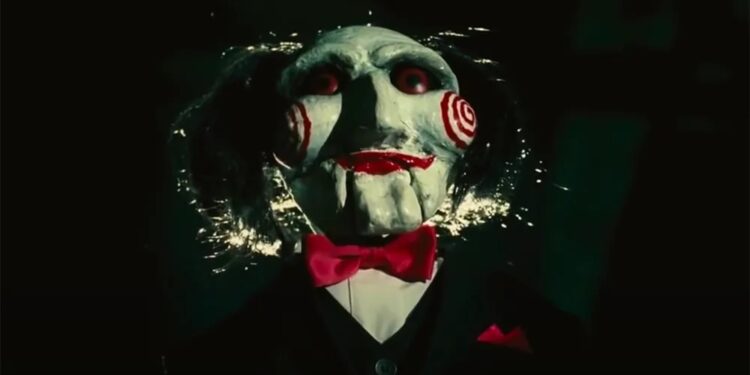By: Rick O’Donnell
The Saw franchise might be late to the party but the impact on horror was immediate. Without being the typical slasher film that horror was built upon, Saw brought to life psychological horror. Despite the franchise seemingly coming to an end, it appears it’s back on with a new one to be released soon.
Saw is the seventh-highest-grossing horror franchise despite not being everyone’s cup of tea. A film that started with a 1.2 million dollar budget would blow up to roughly $103 million for just the first movie of the franchise. Now the entire series sits at over $1.1 billion up from ~$120 million in their total budget. No matter how good or bad people claim these movies are, they continue to make money both domestically and overseas with 10 movies and (at least) one more on the way.
Despite the success, there are naysayers when it comes to the franchise. There’s a thin line between the hack and slash of more traditional and mainstream horror and the “gore and torture” of the Saw films. Yet, at the end of the day, horror is horror and it plays on fear of the audience. The likelihood of a masked man kidnapping you and bringing you to a warehouse filled with torture devices as you come to terms with your life’s decisions is extremely low. However, the reality of having to answer for the misdeeds you have committed throughout your life perfectly marries fiction to reality.
In the original Saw movie in 2004 (directed by James Wan, and written by Leigh Whannel), an investigation into a series of murders led us down two separate paths telling the same story. One was detectives David Tapp (Danny Glover) and Steven Sing (Ken Leung) investigation into the serial killer labeled as The Jigsaw Killer. The other, Dr. Lawrence Gordon (Cary Elwes) and photographer Adam (Leigh Whannel) trapped inside what appears to be a bathroom, chained to old pipes, with a dead body in the middle of the room, and no recollection of how they got there. As the story proceeds, the audience finds out why they’re in this particular position, how their stories tie together, and what it has to do with the series of murders.

One of the greatest moments in the franchise came at the end of the first Saw movie. The plot twist at the end would go on to set the tone for the entire franchise as it caught audiences so off guard that people couldn’t help but want more. However, that’s where the problem also starts. The more audiences wanted, the more detailed the traps and narrative evolved. Since then, these movies would go on to be more about the traps and how people had to get out of them, and less about the reasons they were in them.
When the plot evolves to a point where you forget what it was all about in the first place, it’s a red flag. Maybe that’s where the franchise needed a break from releasing a movie every year from 2004-2010. They would pick up again in 2017 and scatter about with their latest offering coming next year in 2025. Through spinoffs, comic books, a video game, short films, and even talks of a TV series, the story is not over for Saw.
The franchise lives on. As long as they can circle back to the Jigsaw Killer and give audiences a desire for closure then there’s no slowing it down. If they continue to forget who brought them to the dance, however, fans will quickly disperse and need a break for maybe even longer this time.
Still, the Saw franchise cemented its place amongst the horror legends long ago and brought a whole new crowd to the horror genre.


 NFL
NFL


